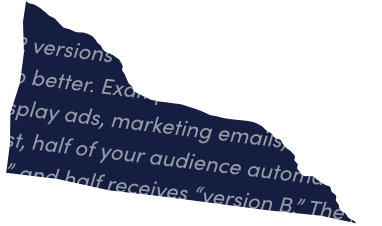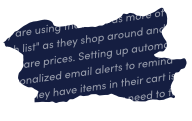A Demand Side Platform, also known as a DSP, is an online network of ad inventory supply, where advertisers can buy ad placements made available by online publishers. Advertisers can bid in auctions for ad impressions, and thereby purchase ad space across many different websites and mobile apps. In simple terms, a DSP is a programmatic advertising tool that helps to match ads with the right ‘spots’ on publisher sites.
What is a DSP?
A DSP, or Demand Side Platform, is a programmatic advertising tool that enables advertisers to buy and bid for ad placements in an automated way on multiple websites simultaneously.
A DSP works in two stages: setup and optimization. In the first stage, the advertiser uploads the ad creative, sets up the targeting parameters, and allocates a campaign budget. In the second stage, advertisers can check their campaign results, understand how and when viewers interacted with their ads, and use that data to optimize the ads and boost their return on campaign spend. DSPs feature a dashboard where advertisers can manage and monitor campaign setup and optimization in a centralized manner.
There are three types of DSPs that are currently most used by advertisers, namely: mobile, which showcases any available mobile impressions in a publisher’s inventory; white-label, which is more of a blank slate, allowing advertisers to design their own programs for advertising; and finally, self-serve, which allow advertisers to take full control over their ad buying, from targeting to campaign management and optimization.
How does a DSP work?
When an advertiser sets up a campaign in a DSP, the system will start to bid on impressions. These are offered by ad exchanges or SSPs (Supplier Side Platforms). The DSP analyzes the data of each of the impressions available to decide how much they’ll be worth, and how relevant they are to the media buyer (ie., the advertiser).
Once the DSP buys an impression, it sends it back to the website and the ad is shown to the user. It’s important to note that this process occurs every time a user visits a website and every time they refresh their page.
Before DSPs, media buyers had to scour through various publishers manually and do much of the work themselves. This was time intensive and resulted in missed opportunities since it relied on human labor. With DSPs, it’s all done automatically and takes about 100 milliseconds.
DSP vs SSP
Where there is demand, there must be supply. Publishers connect their inventories to ad exchanges with an SSP or Supplier Side Platform. While the DSP is focused on the demand side (advertisers), the SSP is used by publishers to filter ads according to set criteria, including advertiser type and impression cost. SSPs work with DSPs to create the programmatic advertising ecosystem serving both sides of the coin: advertisers and publishers.
The most logical way to think about the two is that the DSP is the “buyer’s section” of a programmatic advertising space, and the SSP is the “seller’s section”. On the demand side, an advertiser is shown where it can reach its intended audience within specific parameters of time, place, and budget. On the supply side, a publisher can manage its entire inventory of digital ads and try to extract as much revenue as possible from that inventory.
Benefits for publishers
DSPs help to create more effective relationships between publishers and advertisers. Some of their other benefits to publishers include:
- Extending their reach: DSPs connect multiple advertisers and publishers. This creates many more opportunities to monetize via advertisers they may not have had access to in the past.
- Extending their inventory: Publishers operate over a number of digital platforms. A DSP helps to make all of their offerings known across devices, locations, and media in one place.
- Real-time bidding: With RTB, advertisers can increase their ad spend when they see a campaign working, all in real-time. This is helpful to publishers too as it boosts their revenue.
Benefits for advertisers
DSPs come with a variety of advantages for advertisers, including:
- Automated bidding in real-time: The entire process of analyzing impressions, bidding, and monitoring occurs in milliseconds while users are still loading the page. This allows advertisers and media buyers to increase the volume of ads they run without needing to manually manage the entire process.
- A broader selection of inventory: DSPs consolidate ad inventory from multiple publishers in one platform, which allows advertisers to reach a much broader range of ad placements than they could on their own.
- Advanced user targeting: All of the data about user behavior collected by a DSP enables advertisers to target audiences more accurately across all digital spaces they visit, helping to improve the efficiency and ROI of ad campaigns.
- Tracking and reporting: DSPs allow for data-driven analytics and reporting to help advertisers understand their campaign activity and performance, and then optimize to spend the campaign budget more effectively.
Examples of DSPs
There are several programmatic DSPs, so make sure to choose the ones that are best suited to your advertising strategy and needs. Some popular DSPs include:
- Zemanta: Owned by Outbrain, Zemanta is the most effective DSP to buy native ads, and has proven to lower cost per click (CPC) by at least 35% on average, while also doubling click-through rates (CTR). Many savvy advertisers have already benefitted from using Zemanta to run all types of campaigns, from awareness to conversion.
- Pocketmath: This self-serve DSP is specifically for mobile programmatic advertising and has an impressive response time of just 2 milliseconds. With it, advertisers have access to over 250 countries’ ad inventories in which they can run all manner of campaigns from trigger-based to abandoned cart retargeting.
- Amazon DSP: With Amazon’s DSP, advertisers are given the tools to reach Amazon audiences specifically, on various devices like mobile and desktop. Advertisers can also run their campaigns on the Amazon site and app, and on any websites that Amazon owns, such as IMDb.
- MediaMath: This platform allows advertisers to run and manage their campaigns end to end, and ads are optimized to show only on sites that will give them a high yield or that are reputable.
- SmartyAds DSP: This cloud-based platform gives advertisers the tools to build ad campaigns based on a variety of factors, including location, time, browser, operating system, IP address, and more.
Demand Side Platforms are an essential tool for media buyers and advertisers. With DSPs, advertisers have access to a whole host of digital advertising inventory from display and mobile ads, to video, audio, and more. They can also specifically target the audiences that are most important to their marketing funnels in real-time, measure the effectiveness of their campaigns, and optimize, with the end goal of driving more ROI. With more reach at a lower cost, DSPs are a programmatic advertising tool that every advertiser should have in their toolbox.


